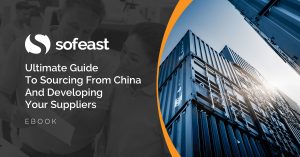Many everyday products are created using the die casting process, but few people are aware of what the process actually involves. Here are a few examples:
- Your car engine, axles, paddles, cooling fan…
- The metal housing/chassis/frame of many electrical products (e.g. cameras, tablets)
- Door handles; locking systems
- Toothbrush or razor mount base and handle
- TV stand
- Trophies, medals…
Basically, die casting, is often the first process for shaping a piece of metal. Some further processing is often required (e.g. drilling holes with CNC machining, surface treatment with electroplating).
It is extremely common, and you will see if often if you purchase metal products from China or elsewhere.
Die Casting Videos
We have prepared some training materials for our engineers who often audit the die casting process. And we shot a few nice videos of it.
1. Raw material ingots
We cover these topics:
- What an ingot is
- How to identify metal ingots (and clarify requirements)
- The 4 most common types of alloys used as raw material for this process: zinc, copper (brass, bronze), aluminium, and magnesium
- Most common grades of those alloys
- What the benefits of each of these common alloys are
2. Different types of die casting processes
We explain:
- What the two main types of processes are
- How hot chamber (or ‘gooseneck casting’) works, with an illustration
- How cold chamber works
- Common variations: low-pressure, vacuum, squeeze, semi-solid (SSM)
3. Step-by-step process
We look at the subsequent phases:
- Clamping
- Injection
- Cooling
- Ejection
- Trimming of excess material
- Overall animated illustration that shows all phases
4. Most common defects
We cover the most common defects on cast parts, and what the issue behind them is:
- Gas porosity
- Short shot
- Cold shut
- Hot tear
- Excessive flash
5. Focus on aluminum die casting
And, finally, we look at aluminium casting, which is very common and calls for very specific parameters:
- Basic aluminum data
- Cold chamber machine layout
- Step by step illustrations (drawn by our engineers)
- Wider trends on aluminium production and demand, and the role of China
And, by the way, we covered the equipment needed for the most common tests on cast parts before.
Questions about die casting
Do you have any questions or observations about die casting? Pose them to us by leaving a comment, and our engineers will be glad to reply.
Ultimate Guide To Sourcing From China And Developing Your Suppliers [eBook]
This FREE eBook starts from the beginning, discussing whether you need to hire a sourcing agent, and follows the sourcing process right through to developing a trusted supplier’s quality and productivity.
There are 15 chapters over 80+ pages to explore, providing exhaustive guidance on the entire sourcing and supplier development process from start to finish, including:
- Identifying suppliers,
- Negotiations,
- Quality inspections,
- Developing Chinese suppliers,
- Improving factory quality and productivity,
- and much more…

![All about the Die Casting Process, Ingots, and Aluminum Casting [Videos] All about the Die Casting Process, Ingots, and Aluminum Casting [Videos]](https://qualityinspection.org/wp-content/uploads/2019/08/AllabouttheDieCastingProcessIngotsandAluminumCastingVideos.jpg)
